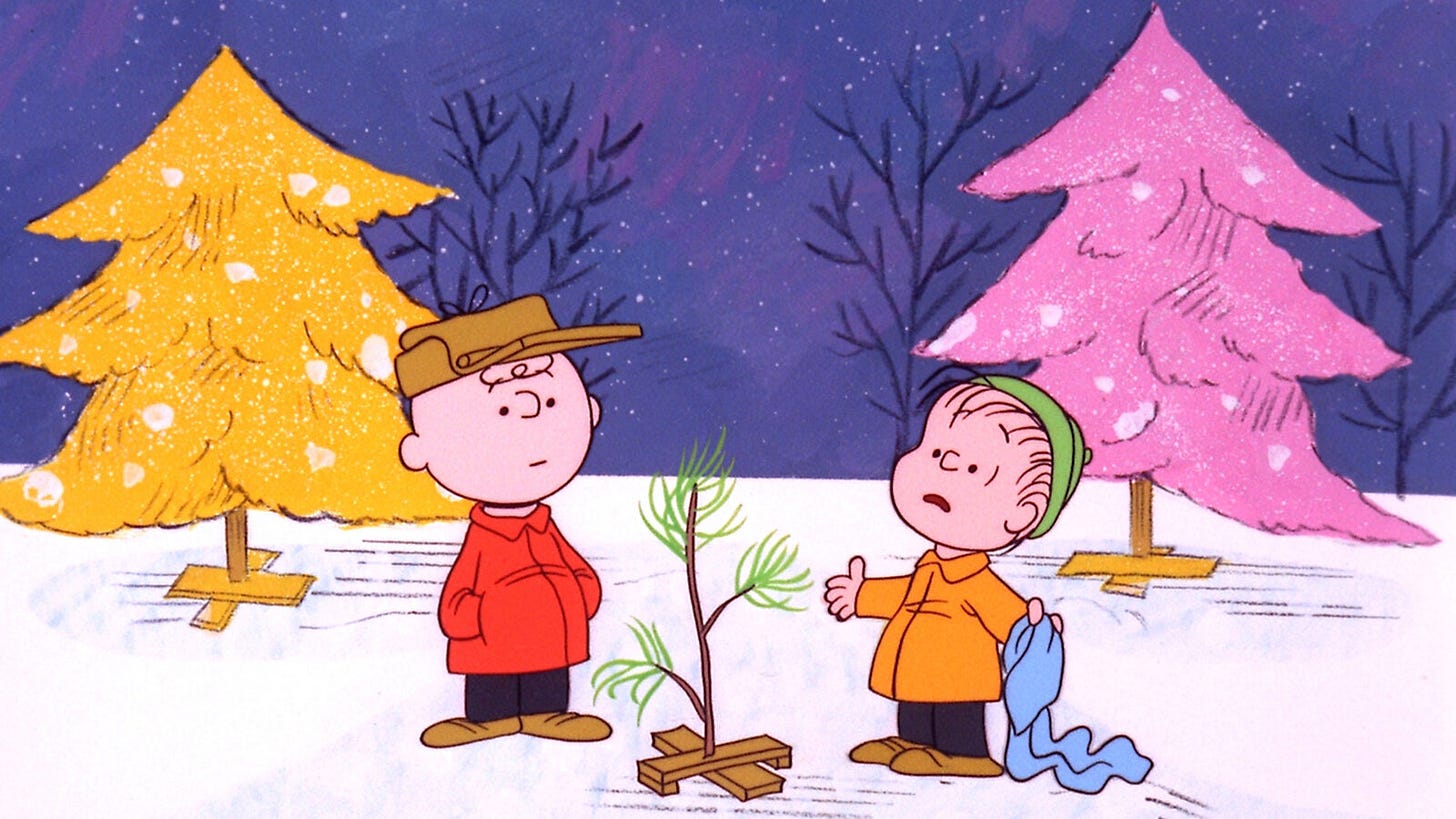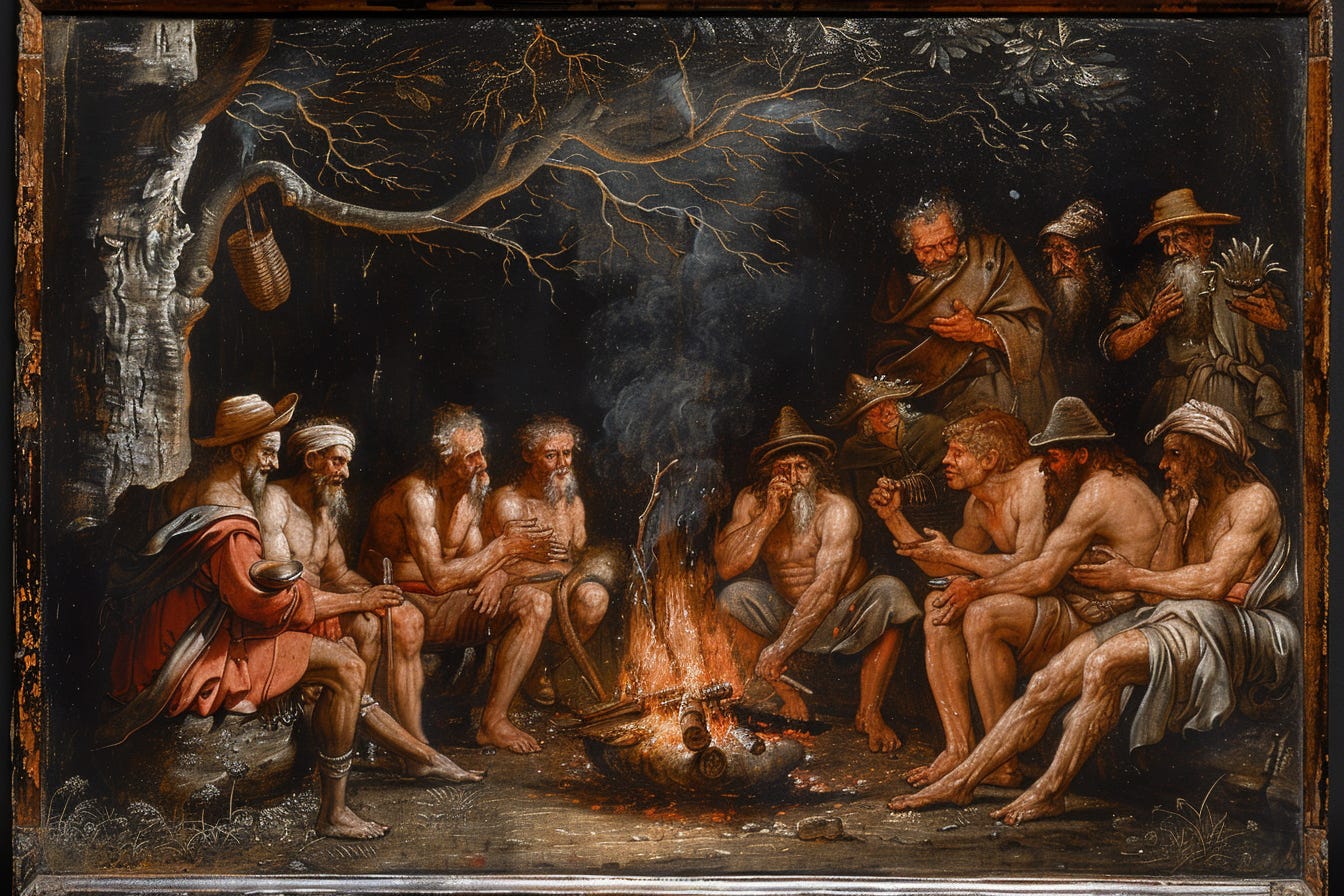To me, the saddest part of the Christmas season begins January 1st. It’s not because all the parties are over or because you caught a cold from your sister’s kids. It’s because this is the time that you’ll find the curbs littered with the corpses of Christmas trees, symbolic items briefly cherished and now wantonly discarded. Just weeks ago, the tree was the centerpiece of your living room, glowing with colored lights and adorned with baubles representing years of memories. You probably paid like $100 for it. Then, as soon as the last present is opened, you strip it of its decorations and toss it to the curb where it lies, defeated and inert, waiting to be collected and turned into mulch.
To be clear, this is not totally a dishonorable end for your Christmas tree. Most municipalities at least purport to have some sort of recycling program for the trees. This is fine. However, it strikes me as emblematic of our endless cycle of consumption. The decorations come down, the sales begin, and the spirit of the season—if it was ever truly felt—is boxed up with the ornaments. This detachment feels like a symptom of a larger cultural malaise, a commercialization so pervasive it’s eroded our ability to honor or ritualize anything. Frankly, I think we would all be better people if we burned the trees.
It’s true that the Christmas tree has roots in older traditions, which modern neopagans will breathlessly explain to you. The most popular example of this is the Roman festival of Saturnalia, when evergreen boughs were used as symbols of rebirth and resilience during the darkest times of the year. The direct ancestor of the modern Christmas tree emerged in medieval Germany as the "paradise tree." These were fir trees adorned with apples, symbolizing the Garden of Eden, and were displayed in homes on December 24th, the feast day of Adam and Eve. Over time, additional decorations such as wafers (symbolizing the Eucharist), tinsel, and gingerbread were added, enhancing the tree's significance in Christian households. The tradition spread to other parts of Europe, notably England, where Queen Charlotte, the German-born wife of King George III, introduced Christmas trees in the late 18th century. German immigrants brought the Christmas tree tradition to America in the 19th century, where it gradually became a central element of Christmas celebrations.
But the genealogy of the tree isn’t so much the point. What matters is why this tradition has endured. The tree wasn’t co-opted; it was glorified. It became a vessel for expressing the mysteries of life, a cosmic story of hope and divine order embedded in the simplest, most tangible elements of nature. From its conical shape to the star represented at the top to the lights and ornaments adorning it, each element offered a specific meaning. For centuries, this symbolism resonated with people, offering a touchstone for their faith and a reminder of the patterns that govern both heaven and earth, a bridge between the material and the transcendent. It deserves better than to be turned into mulch.
Few things feel as innately human as lighting something on fire—it’s our birthright, as old as our species. For millennia, we have gathered around these flames to mark the turning of seasons, the cycles of life, and the mysteries of the cosmos. There are countless examples. The Irish continue in the tradition of the Ancient Celts by celebrating Beltane, Samhain, and Imbolc. In Northeast Italy, the celebration of Panevin is held on January 5th, the eve of Epiphany. In Iceland, bonfires are traditional on New Year's Eve and on January 6th, which they call Þrettándinn (The Thirteenth) and is the last day of the Christmas season. In Iraq, Assyrian Christians light bonfires to celebrate the Feast of the Cross. Indians have the festival of Lohri. Neopagans have Burning Man. These rituals are all about fire as a sacred force, celebrating the rhythms of nature, cleansing the past, and inviting renewal. The bonfire is a declaration of faith—that even in the bleakest season, life would endure.
And yet, here we are in modern America, dragging God’s kindling to the curb like yesterday’s leftovers, completely missing the point. These trees, which for mere weeks stood as radiant symbols of life and divine order, end their journey wedged between the recycling bin and a soggy pile of Amazon boxes. What does it say about us, as a culture, that we can hold something sacred for only as long as it entertains or decorates, only to discard it with the rest of the waste? It says that America—and perhaps the modern West writ large—is a culture that has traded ritual for safetyism and symbol for commodity.
Ritual, with all its messiness, danger, and unpredictability, demands something of us. It asks us to pause, to reflect, to invest ourselves in the act of meaning-making. But safetyism—the modern worship of control and risk aversion—leaves no room for such vulnerability. It insists on clean, efficient disposal methods, on minimizing the rawness of life, on making even our endings antiseptic. In a society driven by consumption, even the sacred is reduced to a product, something to be bought, displayed, and discarded. What we lose in this trade is the deeper connection to the divine and the communal—the understanding that these symbols were never just decorations but invitations to participate in something greater than ourselves.
In 2023, the governor of New Jersey vetoed a bill that would have allowed Christmas tree bonfires in public parks, citing concerns over safety and liability. It was the perfect illustration of what we’ve come to value as a culture. Not shared experience, not the beauty of ritual, just pure risk management and litigation avoidance. It’s not that safety is unimportant; of course, fire should be handled responsibly. But safetyism doesn’t stop at reasonable precautions. It smothers anything raw, unpredictable, or alive. It sterilizes experience and replaces meaning with control. Thus, a communal ecstatic act of transformation becomes a hazard to be regulated out of existence. It’s easier to ban a tradition than to foster the trust, responsibility, and communal spirit it requires.
The irony, of course, is that safetyism often leaves us less safe in more profound ways. In our obsession with eliminating risk, we lose the ability to engage with the very things that make life meaningful—ritual, community, connection to the sacred. We forget that fire, while dangerous, is also transformative. It teaches us respect, reverence, and care. When we remove these elements from our lives, we don’t just lose the danger; we lose the beauty and growth that come with it.
Bonfires are inherently communal. They require people to come together, bringing not just their kindling but their stories, songs, and presence. In a society increasingly fragmented by geographic mobility, social media, and political polarization, the idea of gathering the whole neighborhood around a fire feels quaint, if not impossible. The loss of tight-knit communities has left little room for the kinds of shared rituals bonfires once represented. Beyond providing warmth on a cold night, reviving such rituals could afford us the opportunity to reconnect to one another, to nature, and to the sacred. What if we reclaimed the idea of Christmas as a season, not just a day? What if we rejected the malignant commercialism and detachment from meaning that makes some people so unhappy over the holidays and instead embraced the ancient rhythms and rituals that marked its end, creating space for reflection and renewal?
Although the commercialization of Christmas has blurred its traditional boundaries, the Christmas season does not end on December 26th. Retailers may quickly replace Christmas displays with Valentine’s Day merchandise, but traditionally, the Christmas season doesn’t end until Epiphany on January 6th. This twelve-day span is where we get the “Twelve Days of Christmas,” a time historically filled with feasts, gift-giving, and various community traditions. In some places, like parts of Italy and Spain, Epiphany remains a major holiday. Some more traditional Catholic and Orthodox continue celebrating until Candlemas, although keeping your tree up until February might strike some as unreasonable.
For a Christmas tree bonfire tradition, Epiphany (Theophany for the Orthodox among us) would align best with historical and religious customs while offering a meaningful conclusion to the holiday. It’s a way to reconnect, to pause and mark the transition, rather than simply rushing forward without a backward glance. Next season, instead of chucking your tree to the curb, plan to gather with friends or neighbors. Fire doesn’t just get rid of the tree; it honors it, releasing its meaning into the air and carrying it skyward. In a culture so often defined by consumption and haste, restoring rituals like this could remind us of what we’ve lost—and what we stand to gain.








